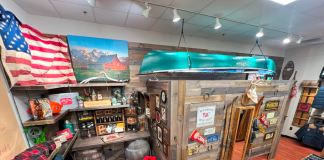How will current and future tariffs impact consumer purchasing? According to a new report from The NPD Group, buying decisions will be impacted less by household income or cost and more by whether a product is considered a “necessity.” The report maps more than three dozen general merchandise categories against the relative potential impact of tariffs and offers insight into the effects of tariffs already enacted in select categories.
Sales in automotive categories, men’s and women’s underwear, skin care, and baby gear will respond less to price increases from tariffs, as consumers consider them necessities. The largest expected sales impacts from price increases will likely occur in categories that consumers consider “nice to have,” such as bicycles, handbags, luggage, watches, games, televisions, and headphones. “We are already observing sales reductions in some of the categories where tariffs were introduced in 2018,” said NPD.
The average selling price of items in a category does not predict the consumer-reported potential for sales impact from price increases. High- and low-priced items appear in all category groups, regardless of the expected magnitude of the tariff impact. However, higher prices do correlate somewhat with increased odds of delaying a purchase.
“Consumer perceptions will determine the effect of tariffs on overall spending and the economy,” explained NPD chief industry sdvisor Marshal Cohen. “Consumers will balance price and value according to their preferences and needs, trading down or delaying inessential purchases. Marketers should watch price trends and analyze sales impacts to estimate impact on their portfolios.”
NPD also offers custom pricing analyses based on its point-of-sale data.
For the Navigating Pricing in a Post-Tariff World study, NPD surveyed more than 2,500 consumers who purchased or planned to purchase the categories covered. NPD also analyzed point-of-sale data from 2016-2019, using time series forecasting models to understand the impact of tariffs on retail sales for adult bicycles, children’s bicycles, handbags, and luggage.

The above index reflects the relative impact on potential sales as a composite function of how consumers expect to delay purchases or buy less expensive items. A value of 100 is the average impact across all researched categories. Values above or below 100 indicate the percent difference from the average. As an example, a category index of 120 means that category has 20% greater potential for sales decline than the average category.







